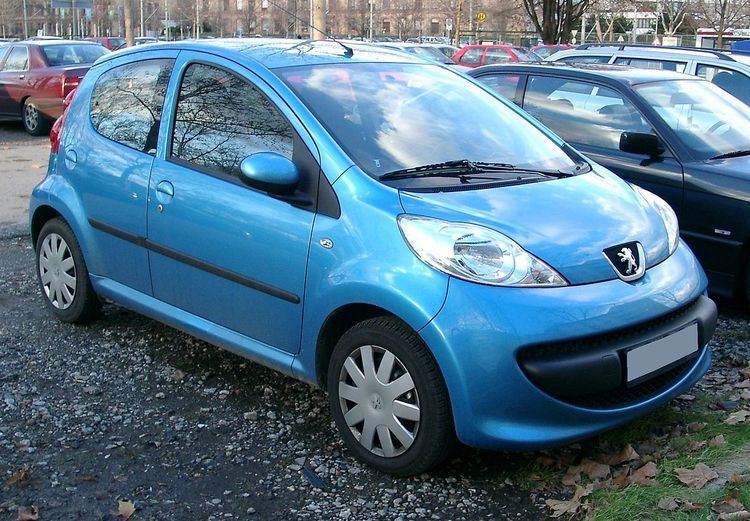Production 2005–2014 Class City car (A) | Also called Citroën C1Toyota Aygo | |
 | ||
Assembly Kolín, Czech Republic (TPCA) | ||
The Peugeot 107 is a city car produced by French automaker Peugeot and launched in June 2005.
Contents
The 107 was developed by the B-Zero project of PSA Peugeot Citroën in a joint-venture with Toyota; the Citroën C1 and Toyota Aygo are badge engineered versions of the same car, although the Aygo has more detail differences than the C1. All three are built at the new facilities of the Toyota Peugeot Citroën Automobile Czech joint-venture in the city of Kolín, Czech Republic. It is a four-seater available as a three- or five-door hatchback. The 107 replaces the 106, which ceased production at the end of 2003 after 12 years.
The rear view of the Peugeot 107 shows the tail light clusters it shares with the Citroën C1, but not with the Toyota Aygo.
In January 2010, PSA Peugeot Citroën announced that it was recalling "under 100,000 units" of the 107 and the Citroën C1, following the worldwide recall by Toyota for a faulty sticking accelerator pedal – in which the Aygo is affected. Under certain circumstances, the pedal can stick in a partially depressed position, or return slowly to the off position.
Facelifts
In February 2009, the Peugeot 107 received a facelift to conform with the new looks given to the Citroën C1 and the Toyota Aygo. The only aesthetic changes made were to the front bumper, interior and wheel trims.
The bumper now sports what some refer to as Peugeot's "large mouth" look. The placement of the numberplate has been moved from the black strip in the middle of the grille (which now has a chrome style strip running along it) to underneath the grille itself and two side vents have been added to give the car an updated look.
The interior now has more choices of fabrics for the seats and the graphics on the centre console have been changed slightly. Other improvements made to the car can be found in the engine which now produces 106 grams of carbon dioxide per kilometre opposed to 109 before and the Standard Combined Urban Cycle fuel economy has been improved from 61 mpg‑imp (4.6 L/100 km; 51 mpg‑US) to 62.8 mpg‑imp (4.50 L/100 km; 52.3 mpg‑US).
In early 2012, the 107 received a further facelift. It now features a new bonnet and front bumper/grill with integrated daytime running lights. The interior saw the introduction of a leather steering wheel and a new gearknob on higher level trims.
Reliability
Breakdown statistics reported by the German Automobile Club in May 2010 placed the Peugeot 107 (which the data grouped with the Citroën C1 and Toyota Aygo) at the top of the sub-small car class in respect of the low break-down rates achieved for cars aged between 1 and 4 years. (Class laggards were the Chevrolet Matiz (0–3-year-old cars) and the two-seater Smart (4–5-year-old cars.)
Replacement
The 107 was replaced by the Peugeot 108 which was launched in July 2014.
